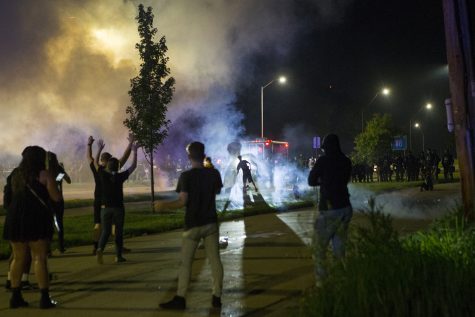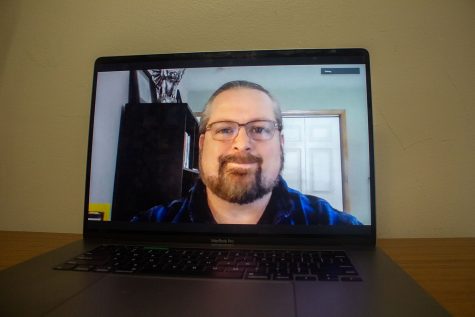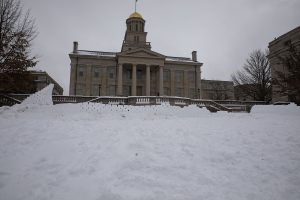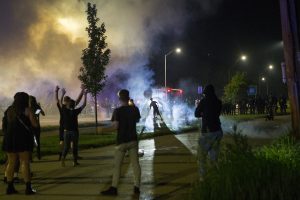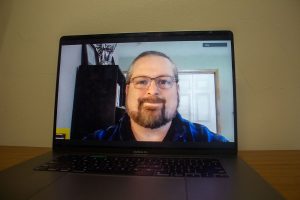Reimagining Campus Safety committee holds first town hall, unveils three prototypes for changing campus safety
On a Wednesday town hall meeting, The University of Iowa’s Reimagining campus safety committee introduced three different prototypes for new campus safety models aimed to address disproportionate impacts on historically marginalized groups.
February 3, 2021
At the first of two scheduled town hall meetings, the reimagining campus safety committee introduced three new prototypes for campus safety models and asked for feedback.
The committee was formed in June following national and local protests against racial injustice. The town hall on Wednesday allowed University of Iowa students, staff and employees anonymity and feedback on how the campus can be safe for everyone, especially BIPOC and marginalized groups.
There were over a hundred people in attendance including the committee and members from Astig Planning, a local agency centered around activism that is partnering with the University of Iowa.
Attendees at the town hall split up into groups of about 15 people, where facilitators presented three different prototypes for campus safety models. After each prototype was presented, people were able to give feedback either verbally or anonymously through Mural.
The prototypes are available on the vice president of student life’s website.
The first prototype presented in video/PowerPoint format was centered around refocusing and retraining campus police forces and the UI police department along with adding a new wellness division within the department. The model focuses on identifying the difference between safety threats and criminal activity with crises and mental health incidents.
The new division would be “structurally adjacent,” to campus police and would be made up of well-being advocates, such as mental health and social service workers. Personnel would focus on supporting vulnerable people in crisis.
Police recruitment and training would be refocused to incorporate more inclusivity and anti-racist practices and values.
A team of dispatchers would receive cultural competency training and would work toward connecting people to the patrol division or the wellbeing division.
In another anonymous mural board, people in the breakout room were asked to give their initial reaction to the prototype, as well as the most and least effective parts of it and suggestions for modifications.
Based on the responses, people were appreciative of the model’s recognition for increased training but skeptical of the logistics on it, anonymous comments included,
“I like the partnership idea and increased training. Seems repetitive and duplicative of current programs, response teams and supports on campus in some ways. It will be interesting to see the criteria and objectives for the review board.”
Another attendee said “Safety on campus is more than just police.”
The second prototype creates a community-police oversight committee dedicated to examining past police patterns and being proactive in determining community-based concerns and research.
The model calls for the president to create a cabinet member to serve as an administrative liaison for the oversight committee in its reviewal processes. Member requirements for the committee would include having background knowledge of justice and equity. Ideas include housing this committee within the Diversity, Equity, and Inclusion Division at the UI.
This model would have a “clear mandate,” in three areas, to listen and learn, improve transparency and trust and work toward ensuring decisions being made are based on current research, and finally, making sure decisions are made upon best practices and community input.
This prototype was the most scrutinized of the three by participants for being too “bureaucratic.”
Comments included,
“Hierarchal and rigid,” “Useless,” “Toothless,” and “Time Wasting.”
The final prototype emphasized a holistic approach to campus safety. This model uses mental health professionals and trained mediators and minimizes the role of police officers as an effort to empower community and campus resources as primary responders and sources of safety.
The practice measures this model would use include increasing resources for members of the campus community of historically marginalized identities and addressing housing and food insecurity.
The model would create a new structure, a Central Campus Support and Safety Center, designed to serve members of the UI community in any well being and safety needs they might have. The plan intends to minimize situations that police officers respond to on campus and increase the presence of social workers and mental health professionals. It would also include a partnership with a local community crisis response team where trained mental health professionals would address and respond to issues instead of police.
This model was met with the most positivity on the mural board. Comments included,
“Great and requires more resources,” and “Ideal.”
Prototype three still faced some criticism as it still would involve law enforcement, just to a lesser extent.
After an hour in break-out rooms the last half an hour was dedicated to a Q and A in a large group format.
A frequent theme throughout the town hall were how each prototype would be funded and implemented.
The committee has not necessarily weighed in on that aspect of the prototypes, Hansen said in an interview with The Daily Iowan after the meeting.
“I think clearly there’s some principles at work in the prototypes, like one principle might be a shifting of some resources from enforcement — policing, to more human services types of supports,” Hansen said. “But really, I think what we’re focused on right now is getting the models and kind of the priorities in order, knowing that there are a whole variety of ways to fund things.”
Hansen said the committee was pleased with how the town hall went, and the response seems to have been positive.
“We had a debrief with all of the breakout room facilitators, and everyone said their groups were very engaged and conversations were robust, and everyone doesn’t agree, but they were very respectful,” Hansen said.
The mural board feedback will be compiled, she said, as they continue to move forward with the planning process.
There will be one more town hall on Feb. 11, Hansen said, and people who cannot attend will have access to the prototype information and a response survey on the vice president of student life’s website to give their feedback.
“So we just want as many folks as possible to take an opportunity to participate,” Hansen said.





